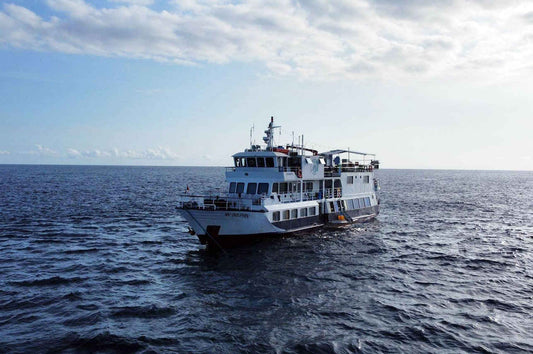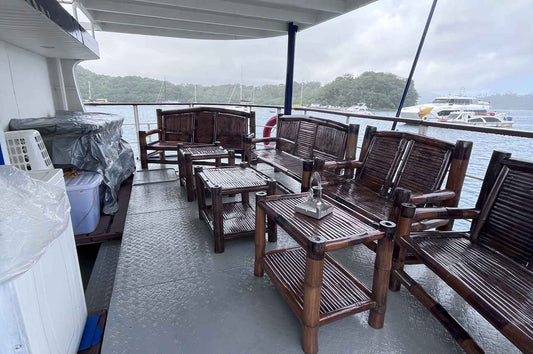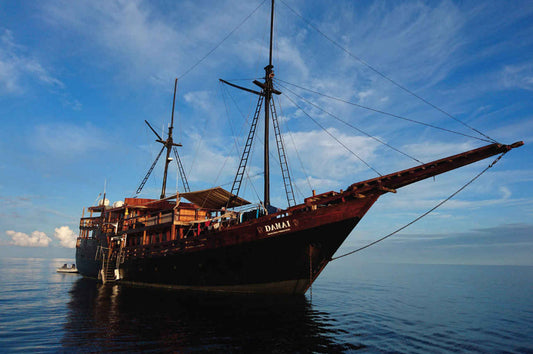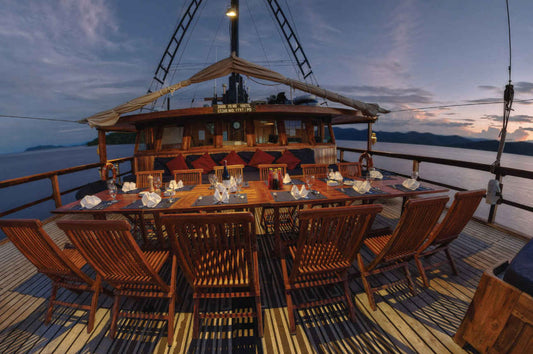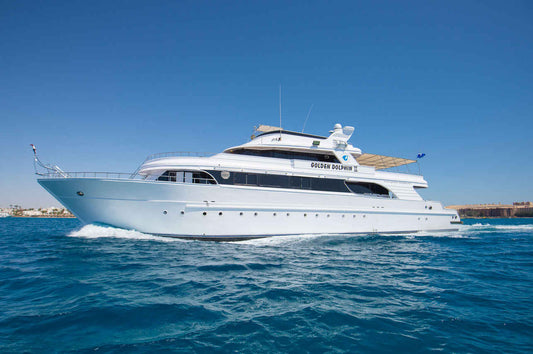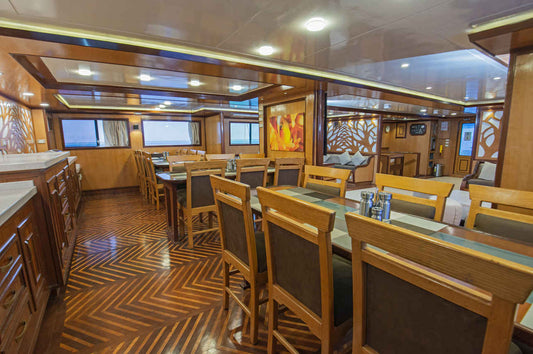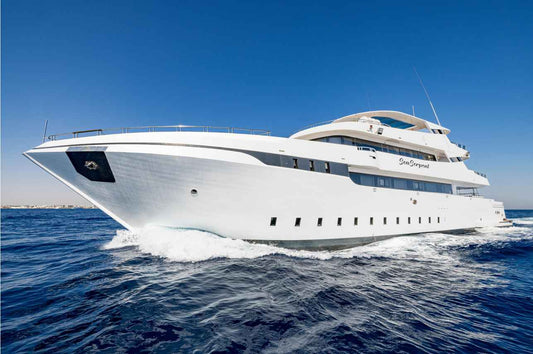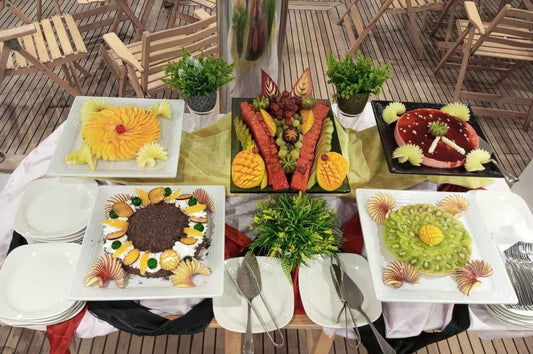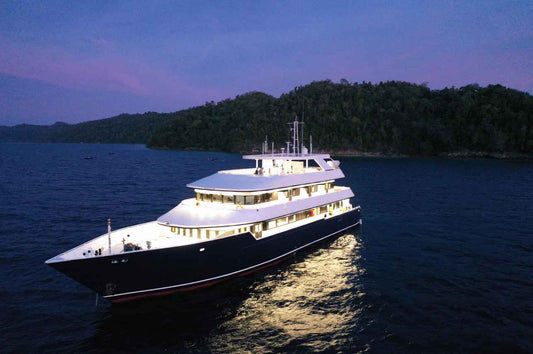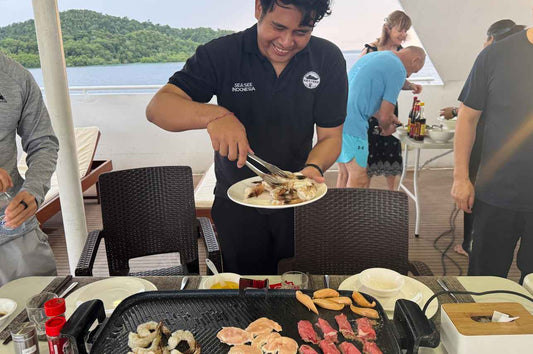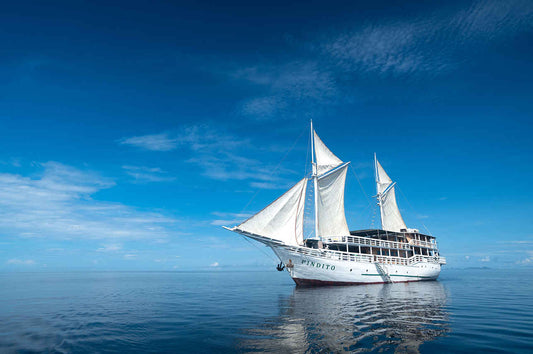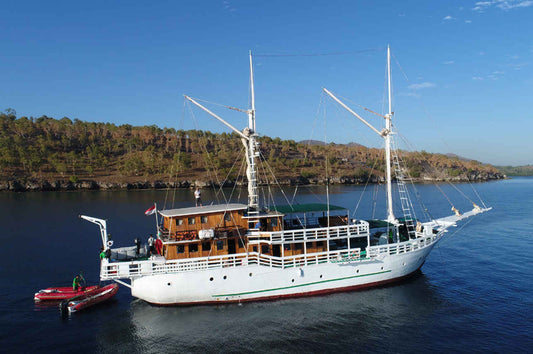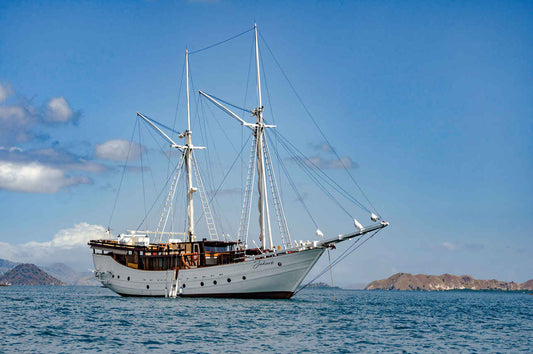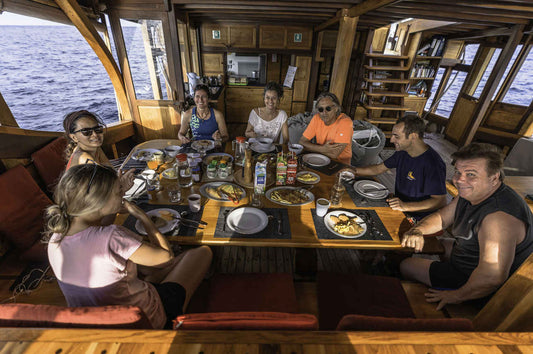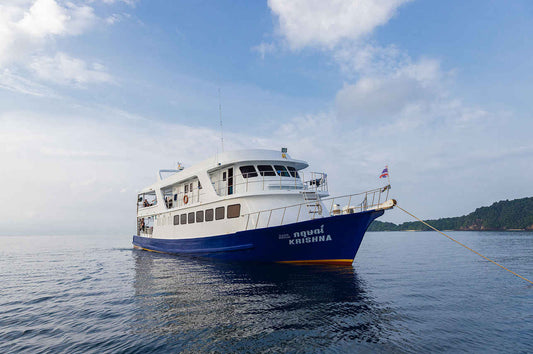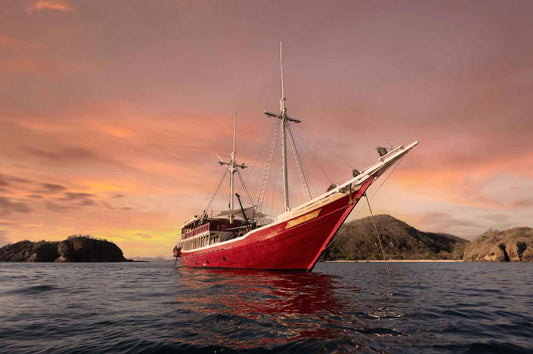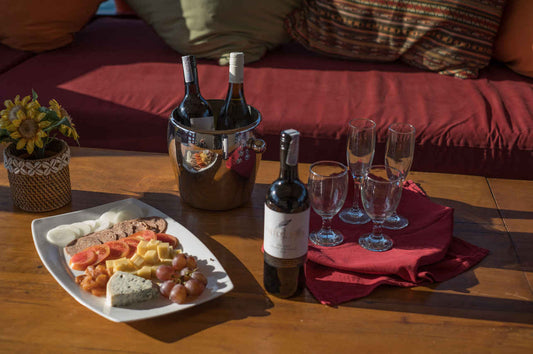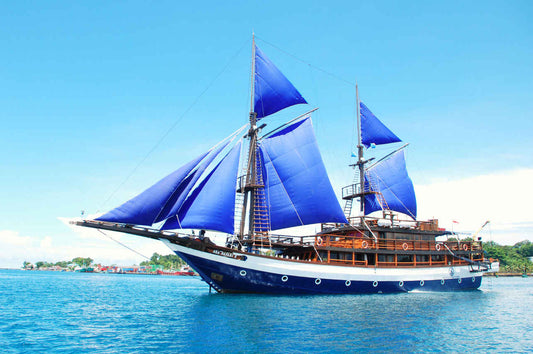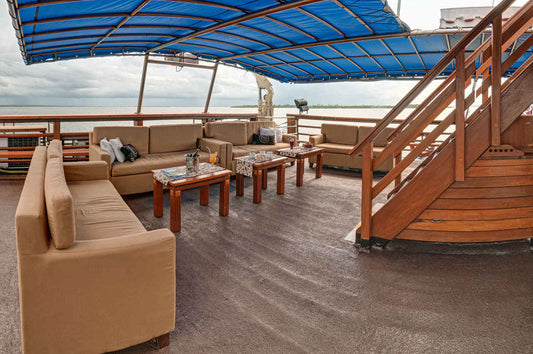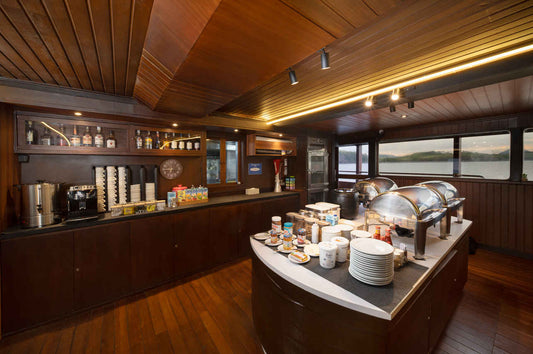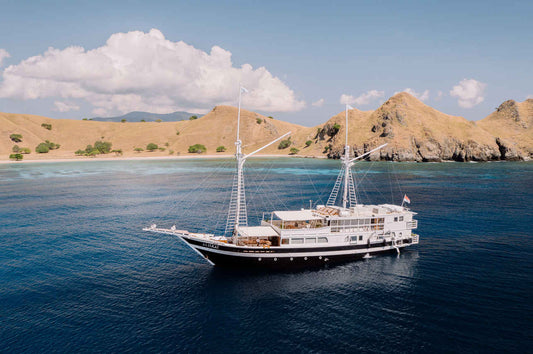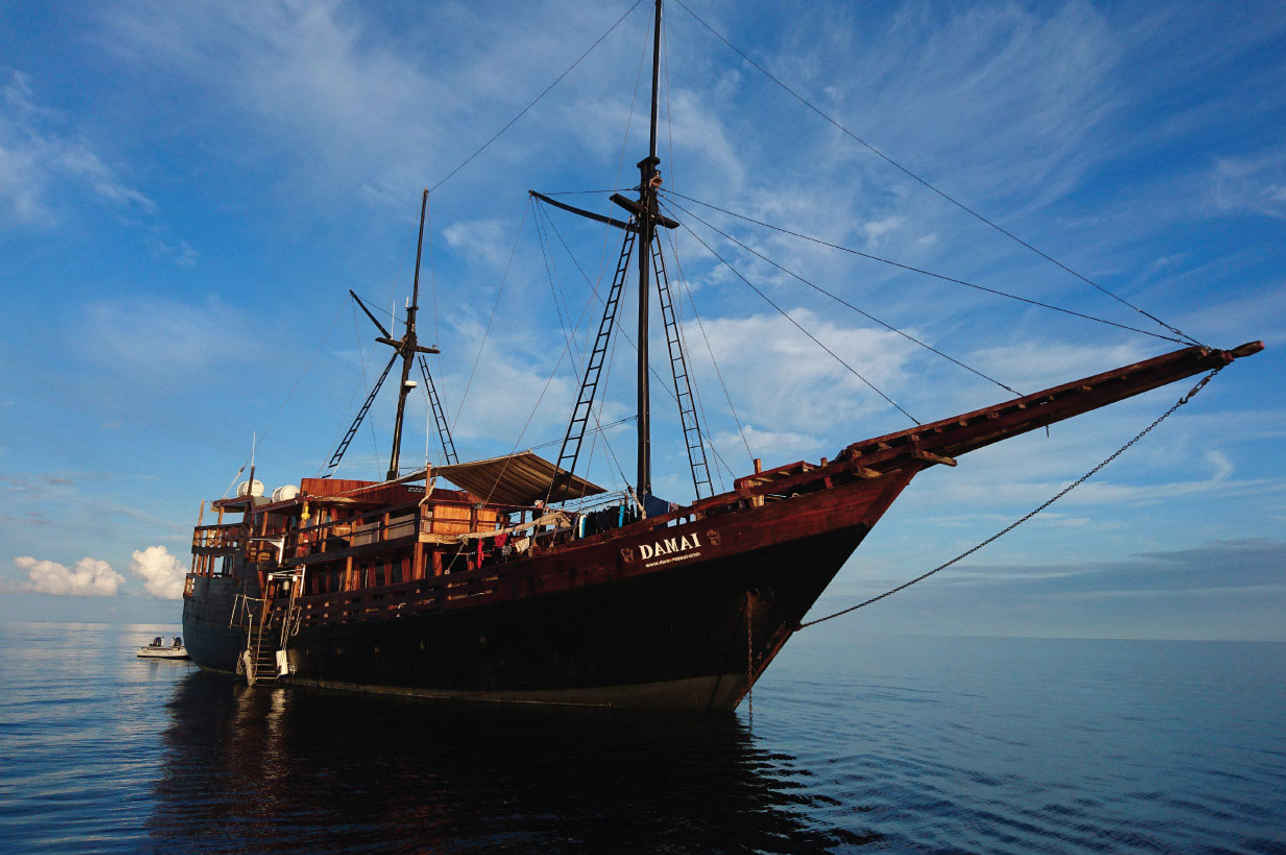
Dive Liveaboards With Rebreather Support Onboard
Compare and book the best dive liveaboard with rebreather support onboard
Discover The Best Dive Liveaboards With Rebreather Support Onboard
Choose the best dive liveaboard with rebreather support from this collection of liveaboards that have rebreather support onboard.
Whether you're looking to dive deep wrecks in the Pacific, explore technical dive sites in the Red Sea, or descend to historic warships in the Atlantic, you'll find vessels equipped to support your rebreather style of diving. These dive liveaboards vary in their destinations and onboard facilities, but they all support rebreather divers.
Some specialise in deep wreck penetration with expert guides and full trimix support, whilst others offer technical diving as part of a broader itinerary, together with rebreatrher support. You'll find vessels with rebreather facilities, extensive gas blending capabilities, and crews experienced in managing complex decompression diving.
Review each liveaboard's specific technical diving offerings, gas availability, and target dive sites carefully.
Whether you're planning your first technical liveaboard adventure or you're a veteran tech diver seeking new challenges, this complete list of dive liveaboards with rebreather support ensures you won't miss the perfect option for your next deep diving expedition.
If you have other preferences to added to these dive liveaboards with rebreather support, use the filter section to narrow your search to find the best dive liveaboard for rebreather dicing for you.
Note: The above “Price Per Day” was correct at the time of producing this article, as was the exchange rate used to convert the GBP cost to US Dollars and Euros. For an up-to-date cost for your chosen liveaboard, please visit the booking page.
Liveaboard Discounted Deals
Once you've found your perfect dive liveaboard, you might want to use this table of discounted liveaboard deals and last minute deals to find a great deal.
Find The Best Dive Liveaboards With Rebreather Support Onboard
Why choose a rebreather friendly liveaboard?
Choose a dive liveaboard with rebreather support onboard to enjoy silent dives, long bottom times, and get closer to the marine wildlife.
A rebreather, which is closed-circuit scuba (Close-Circuit Rebreather - CCR), lets you get close to shy fish and turtles whilst keeping your gas use low, which includes getting close to sharks, as sharks often shy away from bubbles produced by conventional open circuit diving (OC).
On a liveaboard you can enjoy several long dives each day, with calm set up and support from a crew who knows how to support you with your rebreather kit.
What does proper rebreather support look like on a liveaboard?
Good rebreather support on a dive liveaboard means three simple things; clean oxygen fills, the right diluent, and fresh scrubber absorbent like sofnolime.
A good boat stocks medical grade oxygen, air or trimix by request, Sofnolime or an equivalent absorbent, and a safe space to pack scrubbers. There will be small cylinders for onboard units, bailout cylinders in the sizes you prefer, and secure racks so nothing rolls on deck.
Additionaly, the dive liveaboard will offer experienced technical diving guides, and custom dive schedules tailored to rebreather diving, which allows for longer dives and shorter decompression times.
Which rebreather units are usually supported on a liveaboard?
Most rebreather friendly dive boats welcome common units such as AP Inspiration, JJ CCR, rEvo, Hollis Prism, and Poseidon Se7en.
If your unit is less common, tell the operator early so they can check fittings and space. Bring your own spares and tools and you will be ready for quick fixes at sea.
What should you ask before you book your liveaboard?
Ask six things:
- One, which gases are available and at what pressures.
- Two, what size onboard cylinders are carried such as two litre or three litre.
- Three, if M26 oxygen valves or DIN valves are used.
- Four, price and brand of absorbent per kilo and how much is carried.
- Five, bailout sizes and how they are rigged on tenders and ladders.
- Six, if the boat has an oxygen booster and an analyser you can use.
What does a safe day look like on a liveboard?
It starts with a clean work space. Pack the scrubber before breakfast, fit fresh O rings, and run a full checklist without rush. Analyse gases, label every cylinder, and log the numbers.
After the dive, rinse the head, wipe seals, and park the unit in shade, which is why a dive liveaboard with a shaded diving area is important. Charge batteries once the deck is quiet. Little routines keep you relaxed and ready.
What rebreather spares should you pack for a liveaboard trip?
Bring oxygen cells within date, batteries, spare O rings, loop and mouthpiece spares, mushroom valves, one ADV diaphragm if your unit uses one, cable ties, bungee, two bolt snaps, a small tool roll, and a compact multimeter. Add travel size silicone grease and a clean cloth for seats and threads.
How is bailout gas planned on liveaboards?
Follow your training and the boat rules. Choose a gas that covers your maximum depth and gives a calm ascent with stops.
Label the cylinder clearly and clip it in the same way each dive. If the route includes a short deep section, agree a shallower line with the guide so your plan remains simple.
Any tips for heat and humidity at sea?
Work in the shade and keep the loop out of direct sun, in a shaded diving area. Close the Dive Surface Valve (DSV) whenever the mouthpiece is not in your mouth. Store your absorbent sealed and dry.
If the saloon is air conditioned, finish packing there so moisture stays low. Good habits give you clean checks and steady scrubber times.
What about briefings and deck rules?
Expect no open flame near oxygen, no charging in cabins, and a tidy bench for units only. The best crews run short safety notes before day one so everyone understands where rebreather work happens and how cylinders are moved.
This keeps the deck calm and the workflow smooth for both CCR and OC divers.
Final tip before you choose your dive liveaboard with rebreather support
Book one of these dive liveaboards, as they all have rebrerather support onboard, but confirm what support is offered, like having oxygen, diluent and absorbent onboard.
Share your unit make, cylinder sizes, and gas plan before you sail. Arrive with a clear checklist and your key spares. With the right setup you will enjoy long, quiet dives and come back smiling after every splash.
-
Example product title
Vendor:VendorRegular price £19.99 GBPRegular priceUnit price / per -
Example product title
Vendor:VendorRegular price £19.99 GBPRegular priceUnit price / per -
Example product title
Vendor:VendorRegular price £19.99 GBPRegular priceUnit price / per -
Example product title
Vendor:VendorRegular price £19.99 GBPRegular priceUnit price / per
-
Example product title
Vendor:VendorRegular price £19.99 GBPRegular priceUnit price / per -
Example product title
Vendor:VendorRegular price £19.99 GBPRegular priceUnit price / per -
Example product title
Vendor:VendorRegular price £19.99 GBPRegular priceUnit price / per -
Example product title
Vendor:VendorRegular price £19.99 GBPRegular priceUnit price / per
-
Example product title
Vendor:VendorRegular price £19.99 GBPRegular priceUnit price / per -
Example product title
Vendor:VendorRegular price £19.99 GBPRegular priceUnit price / per -
Example product title
Vendor:VendorRegular price £19.99 GBPRegular priceUnit price / per -
Example product title
Vendor:VendorRegular price £19.99 GBPRegular priceUnit price / per
-
Example product title
Vendor:VendorRegular price £19.99 GBPRegular priceUnit price / per -
Example product title
Vendor:VendorRegular price £19.99 GBPRegular priceUnit price / per -
Example product title
Vendor:VendorRegular price £19.99 GBPRegular priceUnit price / per -
Example product title
Vendor:VendorRegular price £19.99 GBPRegular priceUnit price / per
-
Example product title
Vendor:VendorRegular price £19.99 GBPRegular priceUnit price / per -
Example product title
Vendor:VendorRegular price £19.99 GBPRegular priceUnit price / per -
Example product title
Vendor:VendorRegular price £19.99 GBPRegular priceUnit price / per -
Example product title
Vendor:VendorRegular price £19.99 GBPRegular priceUnit price / per
-
Example product title
Vendor:VendorRegular price £19.99 GBPRegular priceUnit price / per -
Example product title
Vendor:VendorRegular price £19.99 GBPRegular priceUnit price / per -
Example product title
Vendor:VendorRegular price £19.99 GBPRegular priceUnit price / per -
Example product title
Vendor:VendorRegular price £19.99 GBPRegular priceUnit price / per
-
Example product title
Vendor:VendorRegular price £19.99 GBPRegular priceUnit price / per -
Example product title
Vendor:VendorRegular price £19.99 GBPRegular priceUnit price / per -
Example product title
Vendor:VendorRegular price £19.99 GBPRegular priceUnit price / per -
Example product title
Vendor:VendorRegular price £19.99 GBPRegular priceUnit price / per
-
Example product title
Vendor:VendorRegular price £19.99 GBPRegular priceUnit price / per -
Example product title
Vendor:VendorRegular price £19.99 GBPRegular priceUnit price / per -
Example product title
Vendor:VendorRegular price £19.99 GBPRegular priceUnit price / per -
Example product title
Vendor:VendorRegular price £19.99 GBPRegular priceUnit price / per
-
Example product title
Vendor:VendorRegular price £19.99 GBPRegular priceUnit price / per -
Example product title
Vendor:VendorRegular price £19.99 GBPRegular priceUnit price / per -
Example product title
Vendor:VendorRegular price £19.99 GBPRegular priceUnit price / per -
Example product title
Vendor:VendorRegular price £19.99 GBPRegular priceUnit price / per
